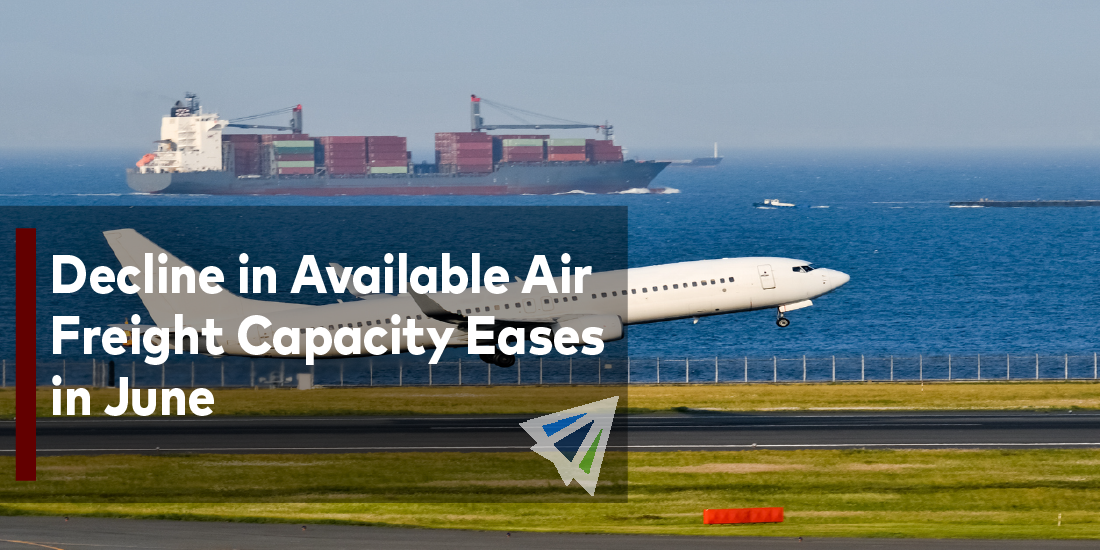The air cargo market experienced a rollercoaster ride over the last couple of years that has left stakeholders scrambling to adapt to the ever-evolving market. Despite an initial surge in air cargo demand following an increase of consumer demand, the tides have shifted in recent months. Stakeholders are currently facing a difficult situation: balancing margin and volume, renegotiating prices in the face of shifting demand, and bringing together market sentiment and actual facts. Explore the opportunities and challenges that influence the air freight industry’s pursuit of stability and long-term growth with us.
The air cargo market in June went through a period of instability and unpredictability that was defined by mood in the market that was at odds with the actual statistics. Carriers are battling the need to review their routes and capacity strategies despite a year-over-year gain of 8% in the amount of available capacity and the normalization of cargo demand because of the summer season.
Forecasts and Data Not Aligning
Van de Wouw, a market analyst, claims that there is a noticeable contrast between the market’s current pessimistic attitude and the facts supporting it. Even while there is a rise in concern among airlines and forwarders, the attitude does not completely reflect the data at this moment, suggesting a more complex scenario.
According to Freightos’ most recent statistics, air freight costs from China to North America have risen to $3.94 per kilogram, a little increase over the previous week. Transatlantic costs, on the other hand, have dropped 5% week over week and are now $1.81 per kilogram.
Following a protracted period of increased demand brought on by the epidemic, the air cargo market is currently facing a slump. As a result, stakeholders are forced to appropriately alter their growth strategies. The market showed signs of stabilization in the first quarter as shippers chose longer-term contracts. But freight forwarders frequently find themselves bound by block space contracts and under pressure from shippers to renegotiate prices to reflect the state of the market.
Carriers must now choose between putting margin or volume first. None of them want to run empty flights, and even the most reputable airlines are beginning to understand the necessity of changing their strategy. Carriers run the risk of losing volume if they maintain high charges. This situation represents a change from the prior worry of managing the capacity of belly planes to the current challenge of managing freighters.
The market may be anticipating a protracted transition away from the current climate of unreasonable pricing over the course of several quarters, according to the outlook for airline cargo departments. It will take some time for the air cargo market to normalize and find a new balance that better reflects market reality.
Conclusion
June showed a clear discrepancy between perceived market conditions and real market data. The market for air cargo saw a modest increase in capacity and a return to normalcy in freighter demand. However, stakeholders face difficulties such having to renegotiate prices, balancing margin and volume, and adjusting to a changing market environment. This uncertain time is expected to last for the foreseeable future, necessitating resiliency and tactical adjustments from industry participants.
